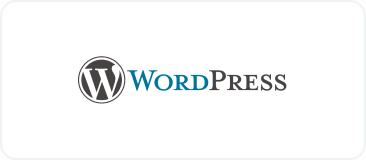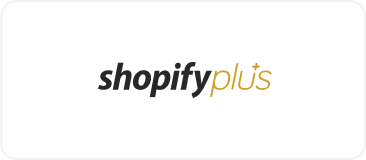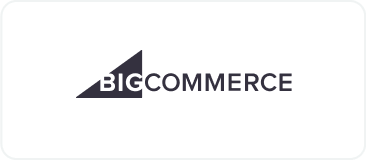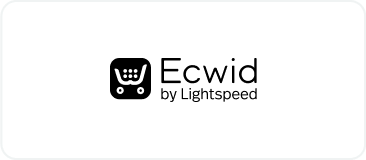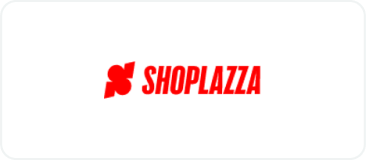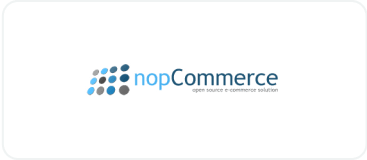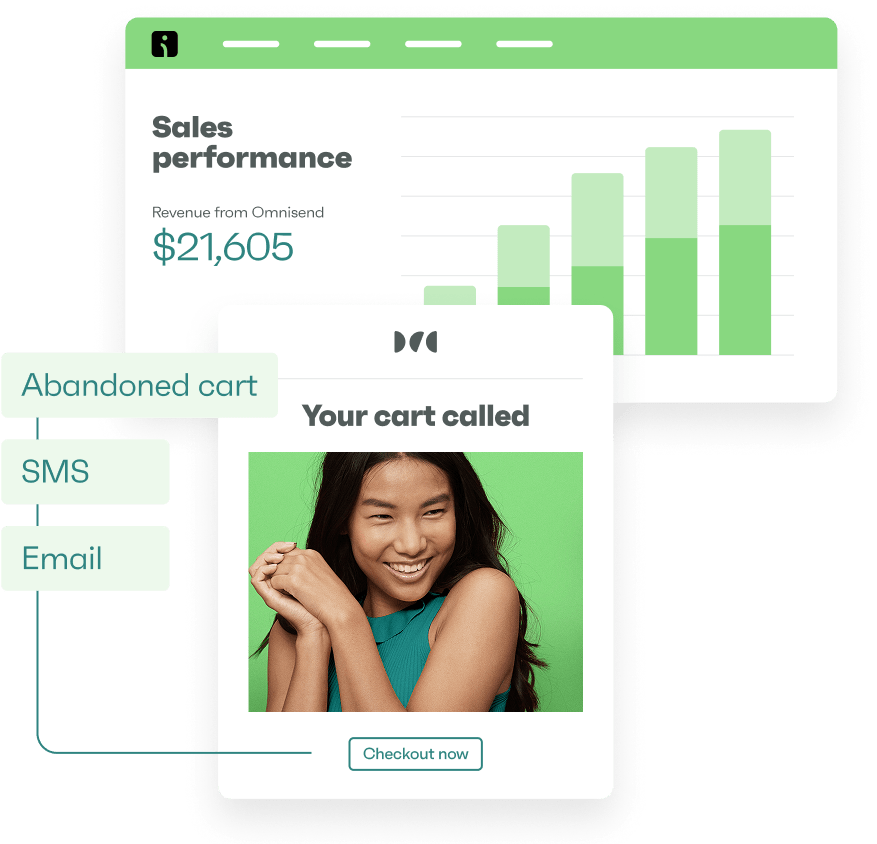Drive sales on autopilot with ecommerce-focused features
See FeaturesIs your current email cadence not delivering the results you expect? Well, you’re not alone. After all, it isn’t easy to find the right balance between too many and too few emails and when to send emails.
While sending emails too frequently can annoy your subscribers, leading to low open rates, unsubscribes, and spam complaints, infrequent emailing can lead to missed engagement opportunities and lost revenue.
The secret to finding the ideal email cadence lies in understanding your audience’s preferences and interests while keeping your business goals in mind. With a strategic approach to cadence marketing, you can create an email schedule that keeps your audience engaged without overwhelming them.
In this article, we’ll discuss what email cadence means and how to determine the perfect frequency and timing for your campaigns. We’ll also provide real-life examples you can draw inspiration from.
Quick sign up | No credit card required
What is an email cadence?
Email cadence refers to the strategic timing, frequency, and sequence of emails you send to your audience. It involves determining the ideal number of emails to send within a specific timeframe and the right time of day or week to deliver those emails.
How to measure email cadence
If you’ve created what you hope is the perfect email cadence, you’ll need to measure its performance to find out if it’s working. Monitoring the right metrics will give you valuable insights into how your audience engages with your emails and help you make the necessary adjustments.
Here are some key metrics to track:
Open rates
This metric reveals how many recipients opened your email. A declining open rate could indicate that you’re sending too many emails, your timing is off, or your subject lines aren’t engaging enough.
Here’s an example of how open rates (and other key metrics) appear on an analytics tool:
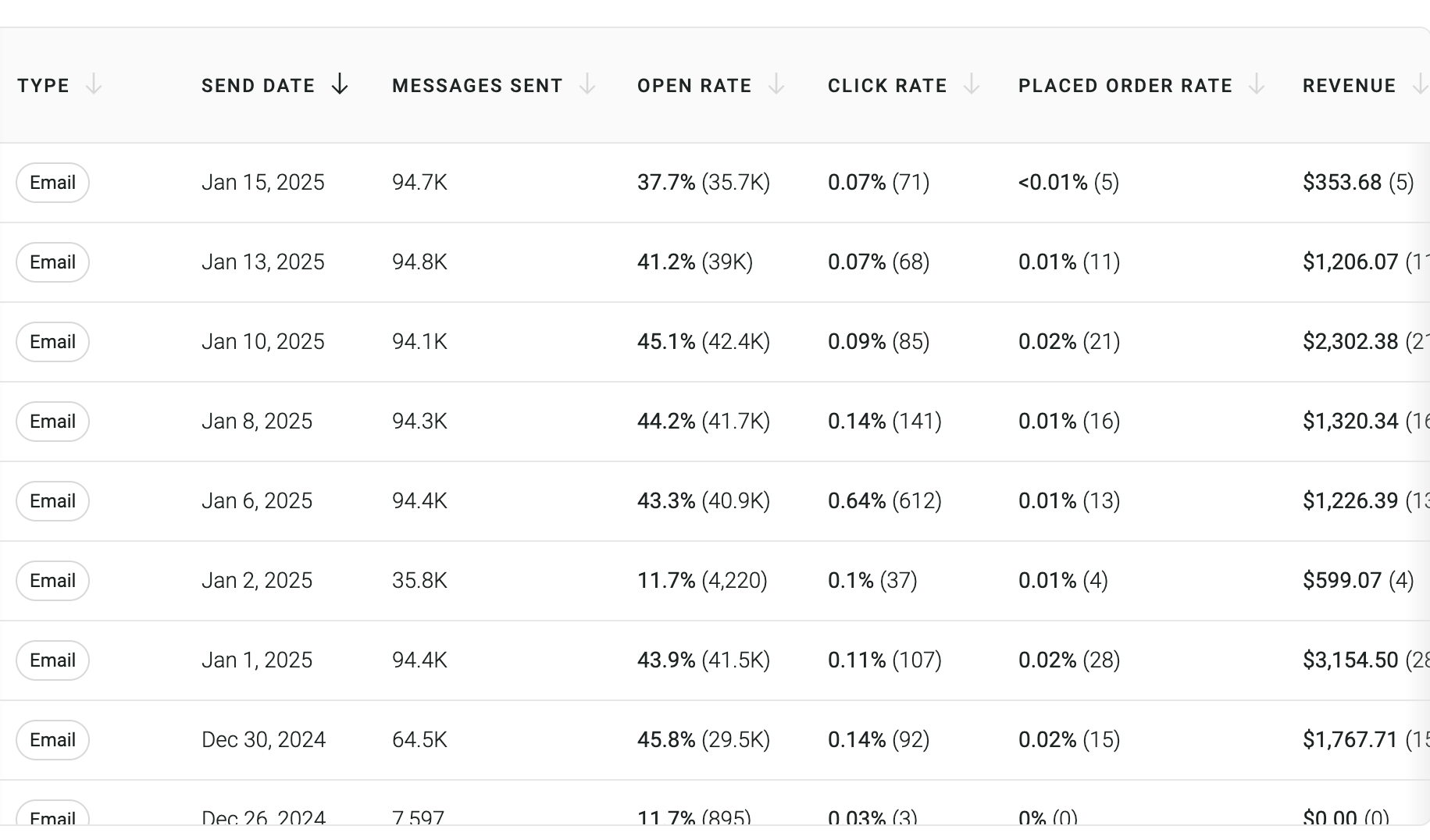
Click-through rates (CTR)
CTR measures the percentage of subscribers who click on a link within your email. It shows how effectively your content engages the audience and drives action since cadence and content work together in this aspect.
It also helps you gauge whether your emails are resonating with your audience. If your CTR is low, it might be time to rethink your email design, cadence, and content.
Unsubscribe rates
As the name suggests, this metric measures the percentage of recipients who opt out after receiving your emails. A recent survey shows that four out of five consumers unsubscribe from businesses that send too many emails. That said, a spike in unsubscribes can signal that you’re emailing too frequently or that your content isn’t resonating with your audience.
Engagement over time
This metric analyzes how your audience interacts with your emails throughout your email marketing campaign or over a set period. Use analytics tools like Omnisend to monitor engagement rates across multiple email sends and refine your email cadence based on the insights you get.
Tips for finding the right email cadence
Striking the perfect balance between email frequency and the recipient’s response time requires data-backed planning and important considerations like segmentation, A/B testing, and more.
Here are some tips to help you find the ideal email cadence:
Know your audience and segment your list
Your subscribers have various reasons for signing up for your emails. That’s why it’s essential to understand their needs and interests. You’ll need to segment your email list into smaller, targeted groups based on shared preferences, demographics, or behaviors. This way, you can tailor your email cadence to match each segment’s expectations.
Experiment and A/B test your email cadence
If you’re unsure which email sequence, frequency, or timing is most effective, A/B testing can help. It allows you to gather valuable insights into how your audience interacts with your emails.
Test different email frequencies and sending times to determine what resonates best with your subscribers. Monitor your open, click-through, and engagement rates to identify patterns and refine your email marketing cadence accordingly.
Here is how the A/B testing works. You can check different subject lines to see which one works better:
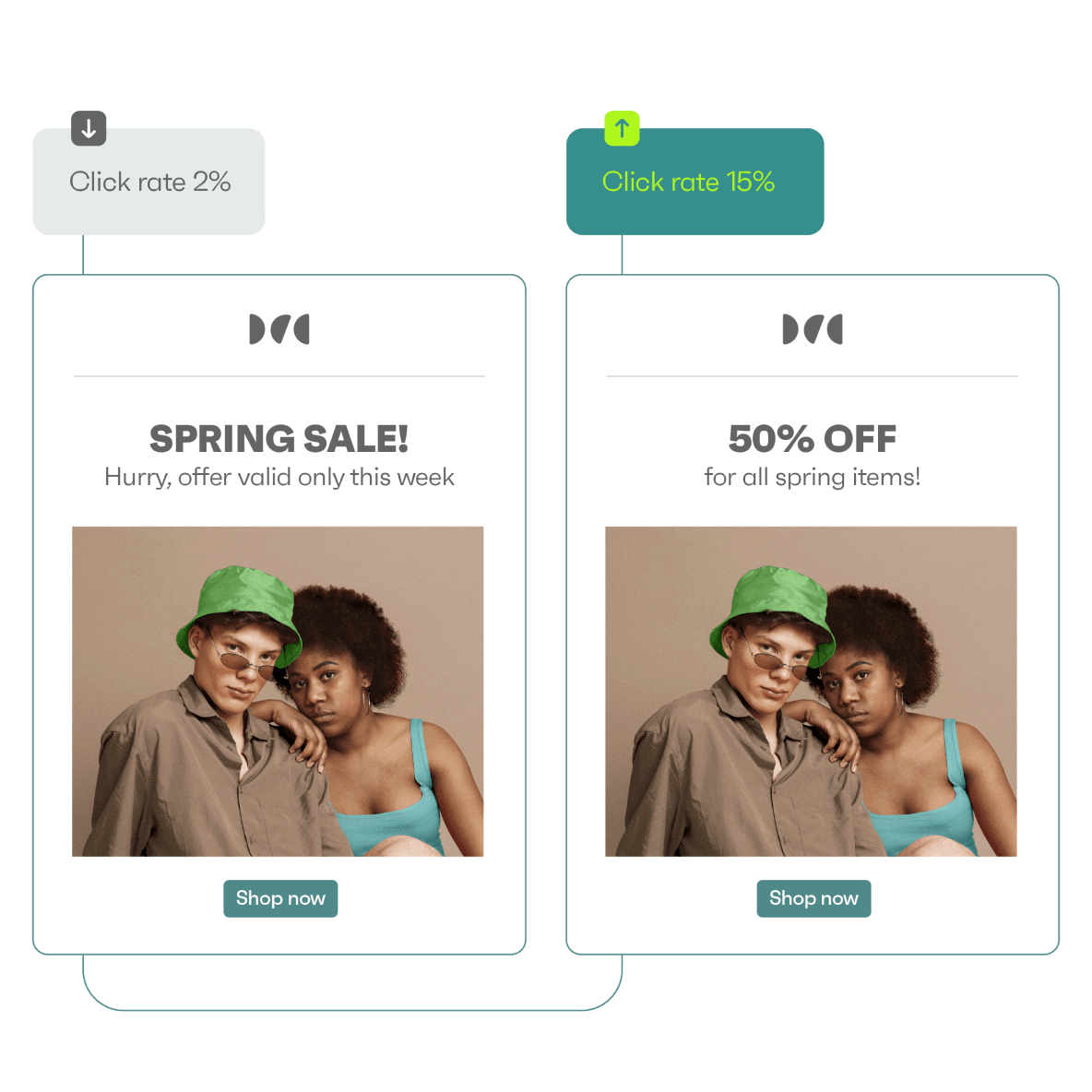
Ask for feedback
One of the most effective ways to ensure your email cadence is meeting your subscribers’ expectations is simply asking for their feedback. This approach provides direct, unfiltered insights into their email preferences, helping you align your email cadence to their needs.
Send a brief survey after a series of emails to learn about your audience’s overall experience and preferences. You can also conduct polls on social media to engage your audience and gain quick insights into their email habits.
Use interactive elements like emoji reactions, sliders, or multiple-choice questions to make your surveys and polls more engaging, prompting them to provide their feedback.
Use email automation tools
Finding the right email cadence becomes easier with the right email automation tools. In fact, a Statista survey shows that 58% of marketers use email marketing automation platforms.
Tools like Omnisend make it easy to schedule and send emails at ideal times and intervals, ensuring you engage your audience without overwhelming them. You can set up drip campaigns triggered by specific actions, such as new subscribers joining your list or customers abandoning their carts.
Additionally, most email automation platforms provide detailed analytics on your key performance metrics. This can help you refine your email cadence and improve results over time.
Email automation success story
The Cake Store used Omnisend’s automated email workflows to deliver personalized reminders to its customers. This strategy generated over $37,000 in sales revenue, achieving a conversion rate 32 times higher than traditional bulk emails.
Get more details: How The Cake Store increased conversions by 32x
Email cadence examples
To help you understand how to structure your email campaigns, here are some examples of brands that achieved effective email cadences for common campaign types. These examples will show you the ideal frequency for sending emails, the best times to email, and the types of messages that drive engagement:
Welcome series
The best welcome emails should gradually introduce your brand to prospects while providing value and building trust. The best way to achieve that is by getting your email cadence right, something that Airbnb does perfectly with its welcome series:
- Day one: The first email welcomes subscribers with a warm greeting and immediately provides clear onboarding instructions with prominent CTAs
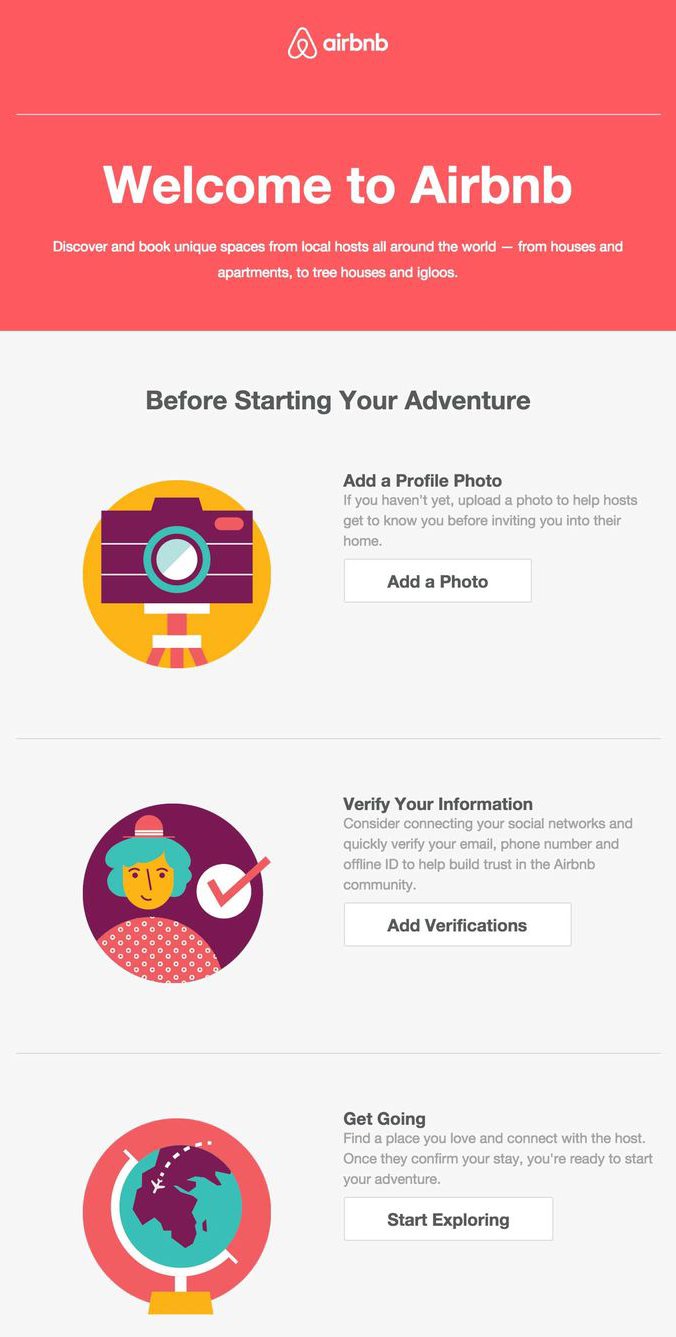
- Day two: The second email introduces how the platform works and builds trust by inviting the recipient to read customer reviews and clearly telling them to “Travel with confidence”

- Day five: The last email invites subscribers to explore unique destinations, create a list of their best experiences, and share them with others
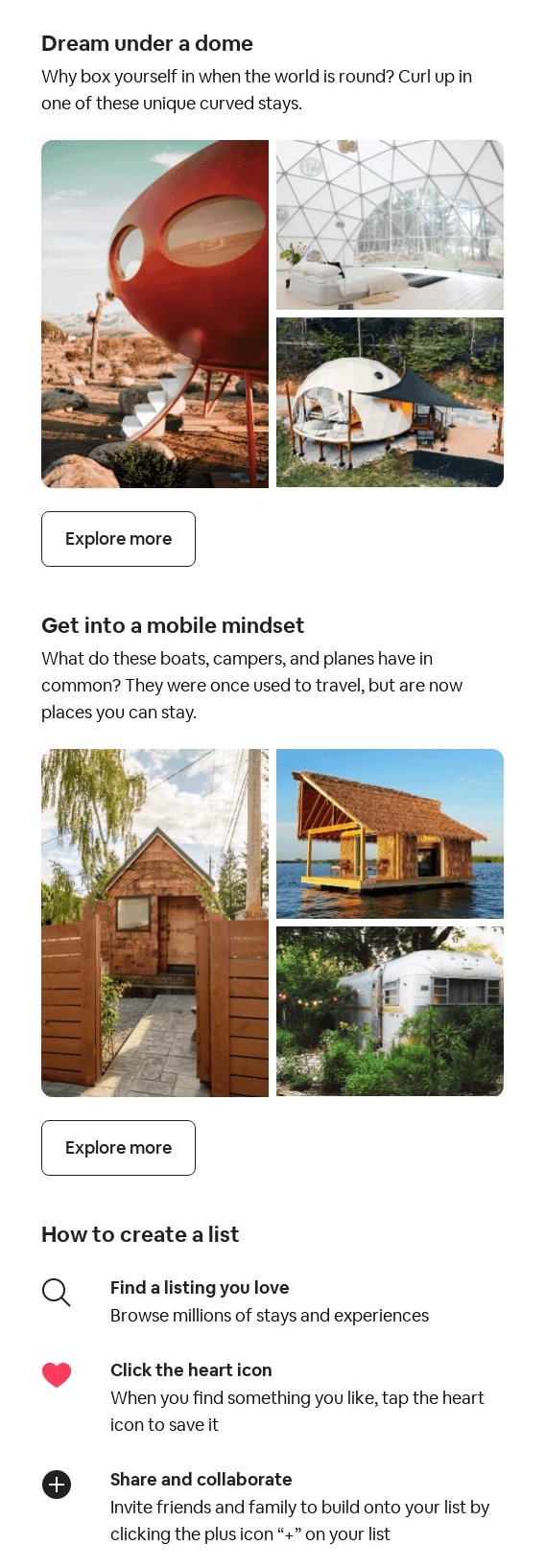
Promotional campaign
If you want to launch a new product or sales event for your brand, sending promotional emails can help you generate excitement, drive sales, and boost ROI. However, you’ll need to find the right timing and frequency to avoid annoying your subscribers.
Made In Cookware found the best email cadence to promote its personalized limited-edition knives:
- Day one (launch day): The first email introduces the limited-edition product specially crafted due to popular demand
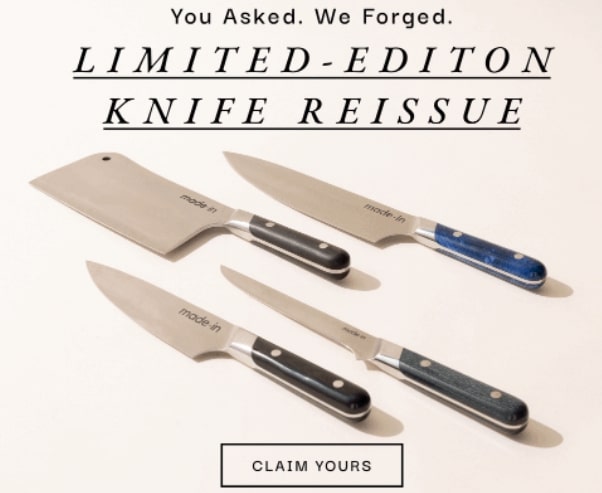
- Day three (mid-campaign): The next email reminds customers about the deal, emphasizing that the product is limited and that they should act quickly
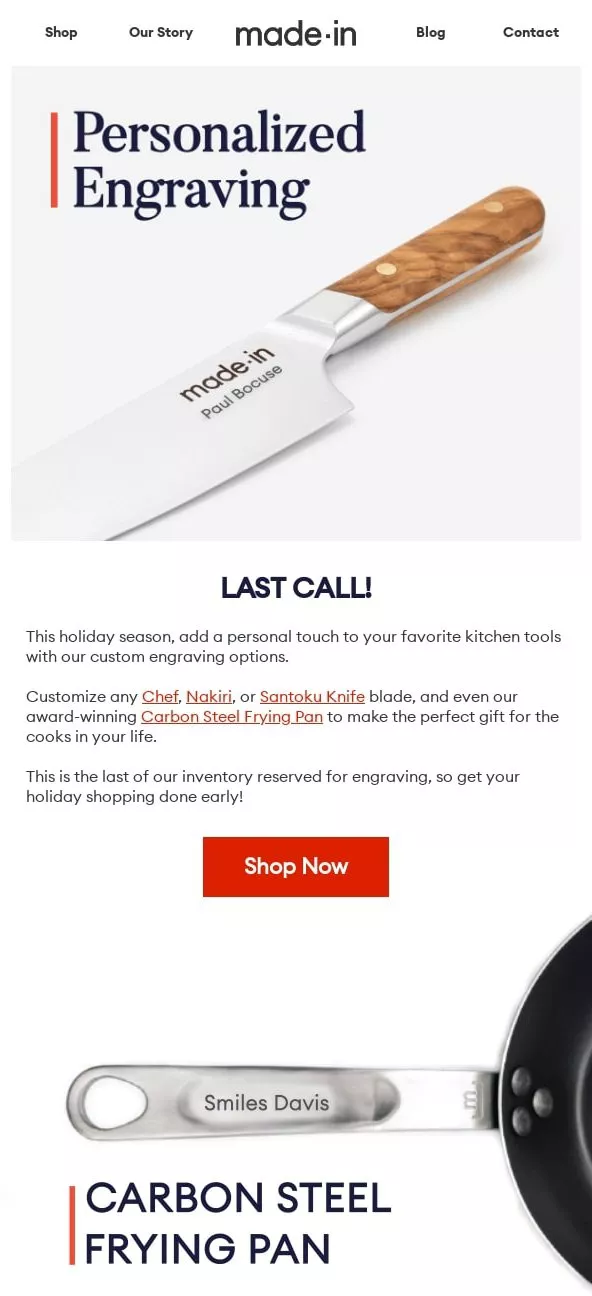
- Day seven (last chance): The final email includes a count-down timer, an exclusive deal, and a clear CTA encouraging customers to get the product before it’s too late
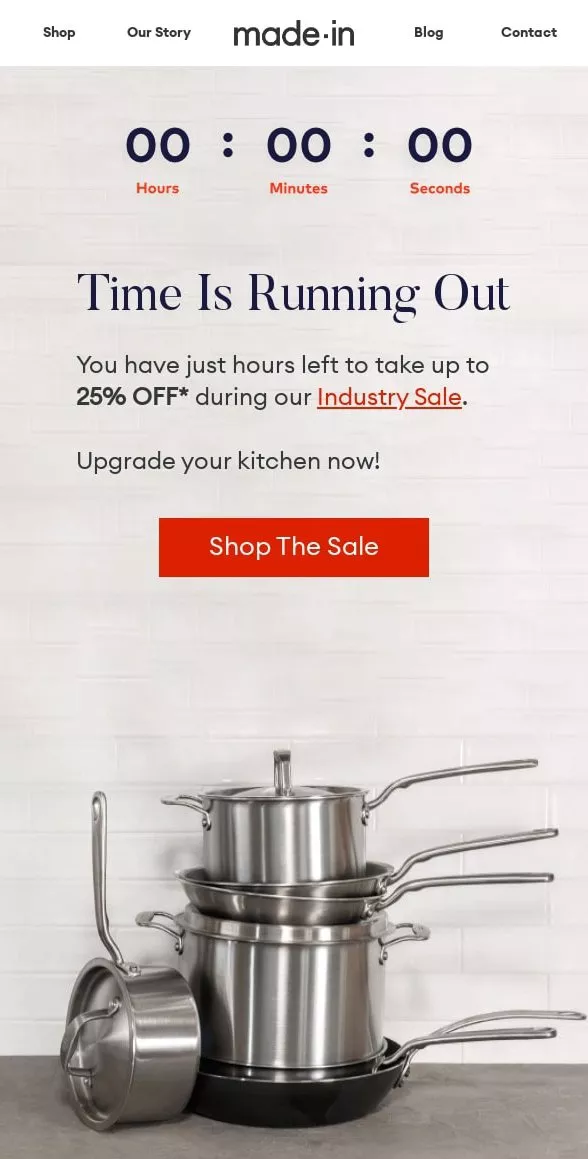
Re-engagement campaign
With well-planned and timed re-engagement emails, you can retarget and win back inactive subscribers. Including personalized content, exclusive offers, and friendly language helps you tap into subscribers’ emotions and prompt them to reconnect with your brand.
That’s precisely what Duolingo does to re-engage its dormant subscribers:
- Day one: The first email acknowledges the user’s absence without being pushy and uses a clear CTA to nudge them to pick up where they left off
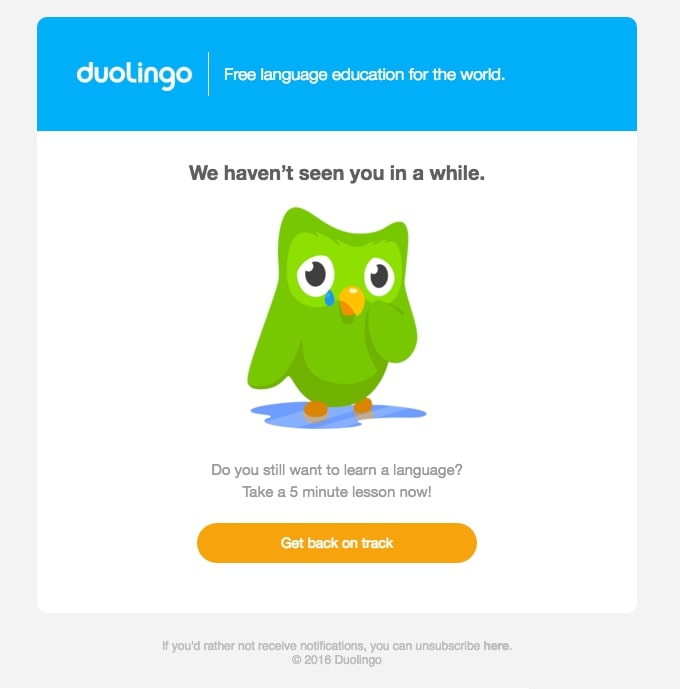
- Day three: The second email still uses a playful and friendly tone to appeal to the user’s emotions, with the image of Duo further encouraging the user to return
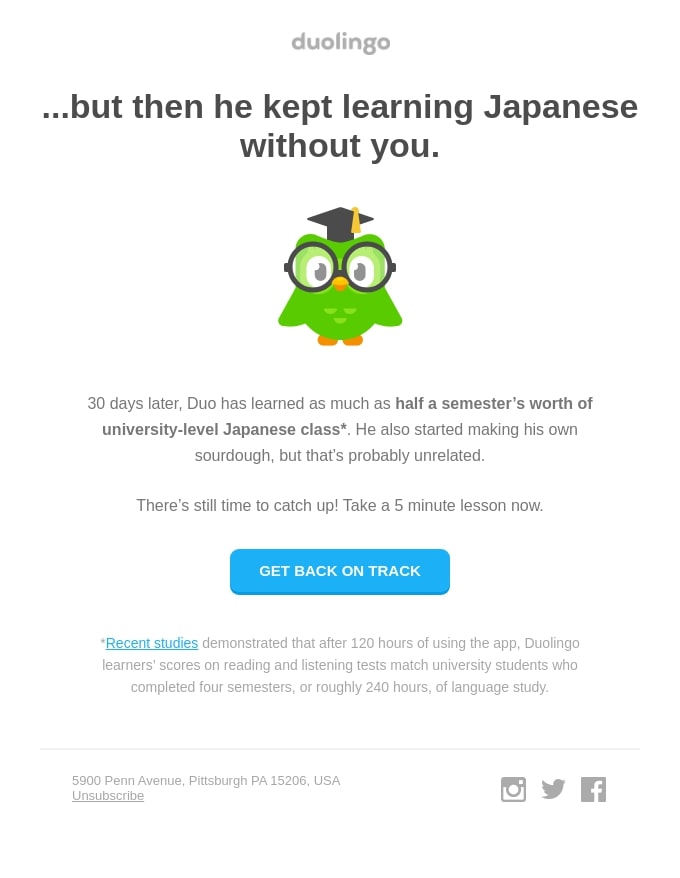
- Day seven: Duolingo follows up with an email highlighting an exciting new challenge to give inactive users a more compelling reason to come back

Here’s a table showing how email cadence differs by campaign type:
| Campaign type | Email count | Email frequency | Email sequence | Purpose |
| Welcome series | Three | Every one to two days | First, second, and fifth day | Onboarding and engaging new subscribers |
| Promotional campaign | Three | Every three to four days | First, third, and seventh day | Promoting products and driving sales |
| Re-engagement series | Three | Every two to three days | First, third, and seventh day | Reconnecting with inactive users |
Conclusion
Finding the right email cadence isn’t a one-size-fits-all approach. What works for one campaign might not work for another. Besides, every subscriber on your list is unique and may respond differently to the timing and frequency of your emails.
It’s important to test different strategies, use the right automation tools, analyze key metrics, and adapt your email cadence based on your audience’s behavior and preferences.
Ready to optimize your email cadence? Start experimenting with the tips covered in this guide today.
Quick sign up | No credit card required
TABLE OF CONTENTS
TABLE OF CONTENTS


No fluff, no spam, no corporate filler. Just a friendly letter, twice a month.
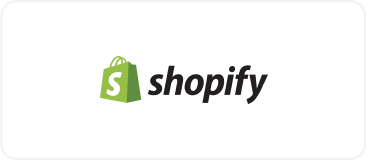
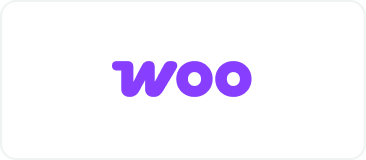 OFFER
OFFER
